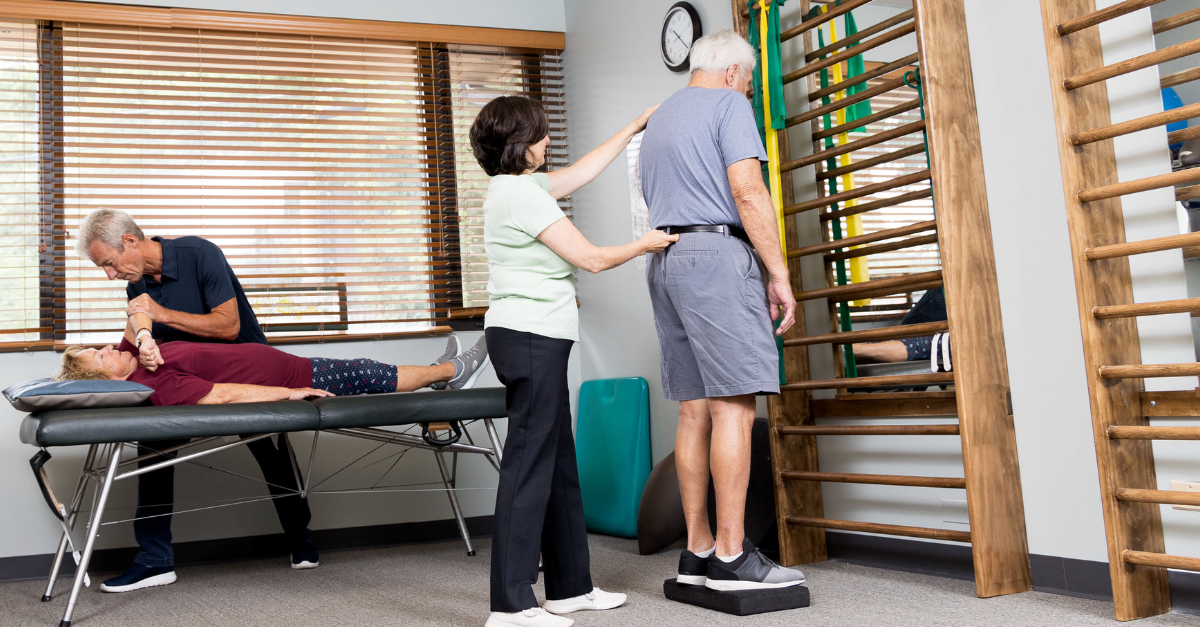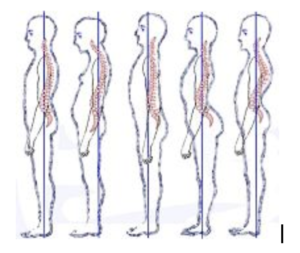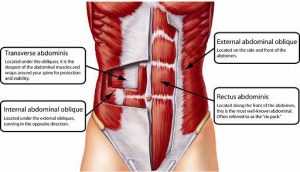I often hear my patients say, “I have terrible posture”. Or their loved ones say to them:
“Stand up straight.”
“Pull your shoulders back.”
“Stick your chest out.”
“Don’t slouch.”
You’ve probably heard these commands to improve your posture.
More often than not, most people — whether young or old, high level athlete or not — don’t know where their bodies are in space (this is called proprioception). Or, they don’t have the appropriate structural alignment, strength or muscular balance in order to attain their ideal posture.
The diagram below shows you some different postural positions. The first drawing shows ideal alignment of the body as the drop down line goes through the top of the head, the ear, shoulder, hip, knee, and ankle. Any deviation forward or backward of the line demonstrates a possible biomechanical dysfunction or muscular imbalance.
Check out your posture
- Stand sideways to a mirror, with your feet shoulder width apart. (Remember, nobody is perfect, so expect to see some deviation.)
- Analyze your posture: Are your shoulders behind your hips? Does your head look too far forward? Does your upper back look rounded?
- Notice what part of your feet you are standing on: Are you more on your heels? On the outside of your feet? On your toes or on the inside of your feet?
- Have a friend or family member stand behind you, placing their hands on your shoulders, and apply gentle pressure down through your shoulders. Does your upper body bend backwards? Does your body seem to buckle into itself? If so, what do you think might happen to you if someone were to bump into you? What if you had to reach for something? What if you had to stand for an extended period of time?
Finding a neutral standing posture
Continue standing sideways, look into the mirror, and follow these 3 steps:
1. Engage your lower abs (transverse abdominis). To do this, stand comfortably and place your hands on your lower belly. Breathe in and place your tongue on the back of your upper teeth,then breathe out making a “thhhhh” sound. Check out this video on how to engage your abs.
2. Next, place your hand on your mid chest (sternum) and apply gentle pressure to lower your chest to relax your shoulders. If you were used to sticking your chest out or pulling your shoulder blades back, then this new position will feel like you are slouching. Check yourself in the mirror. The change is often so subtle that many people do not notice a difference.
3. Now, find your center of balance by rocking forward and backward from your ankles. As you rock forward you will have more pressure on your forefoot. Slow down so you don’t raise up on your toes. Then, rock back on your heels and don’t allow your toes to lift up. Continue rocking forward and back until you find a sweet spot where you are standing on your whole foot. This is your center of balance. Watch this video to learn how to find your center of balance.
Re-check your posture
Now, look at yourself in the mirror. What do you see? More than likely, you will not see any difference from your original posture to your new posture, but it sure feels different, right? You may feel like you are leaning forward and are round-shouldered.
While standing in your new posture, have your friend or family member apply downward pressure through your shoulders. Now that you’ve adjusted your posture, you shouldn’t buckle or budge. You should now have found your ideal posture that is specific for you.
Maintaining good posture
Use the 3 steps above to find this posture throughout your day as you are standing, before walking, while doing the dishes, or brushing your teeth. You can even do the first 2 steps – engaging your abs and lowering you chest – while sitting.
In order to maintain this posture with ease, it’s important to strengthen and lengthen your core. Watch this video for safe core exercises. By following these steps, you’ll be more stable and safe as you stand and move about your day. Over time this will become second nature! By improving your posture, you will find you have much less discomfort and pain.









I often check my posture against a wall for alignment. What are your thoughts on that? I feel it’s been helpful as a general check.
If that’s working for you, it’s great. Unfortunately that might not work for everyone.